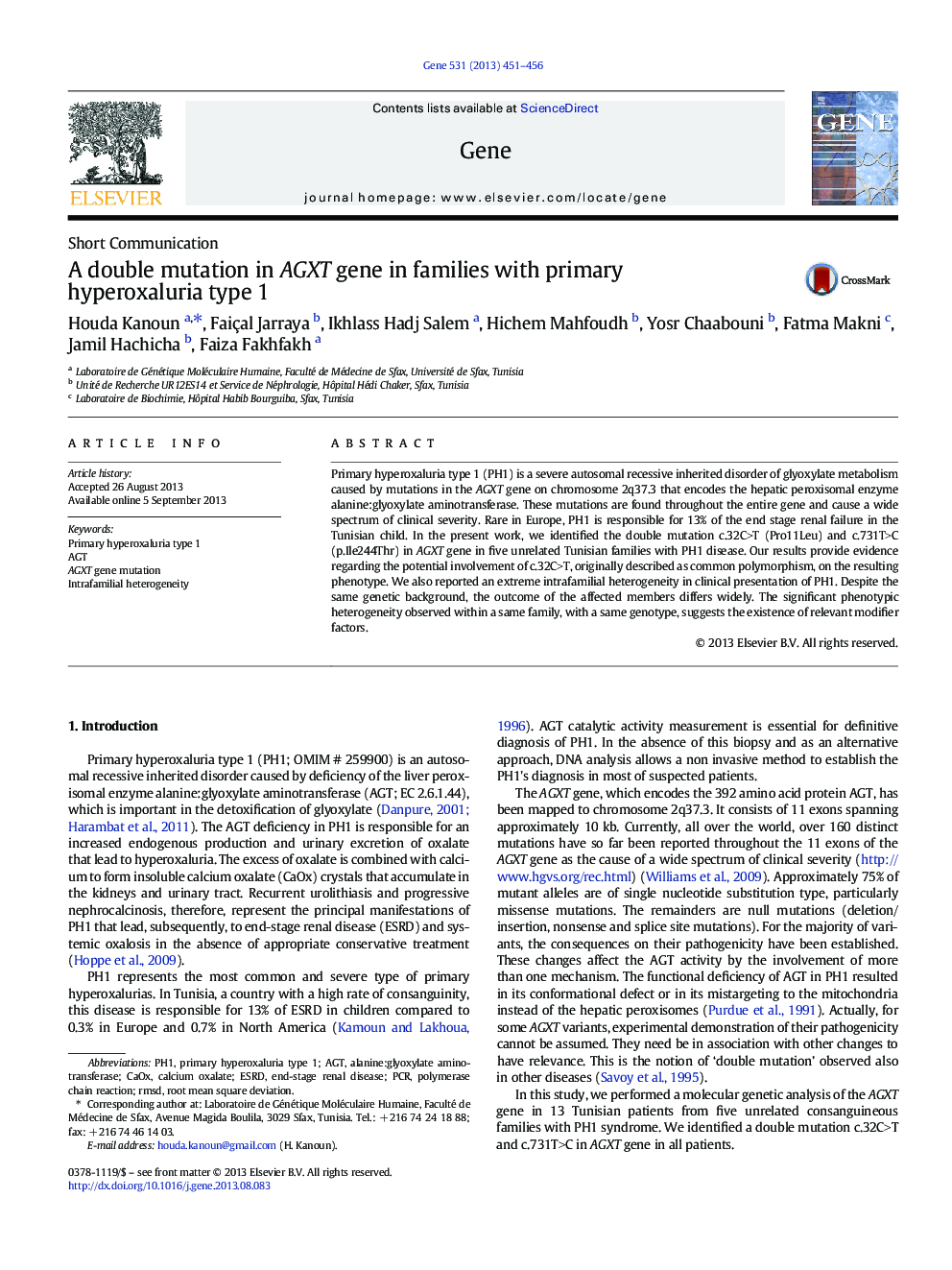| Article ID | Journal | Published Year | Pages | File Type |
|---|---|---|---|---|
| 2816874 | Gene | 2013 | 6 Pages |
•Five PH1 unrelated Tunisian Families were tested for AGXT mutation analysis.•A double mutation Pro11Leu and Ile244Thr was identified in AGXT gene.•We provide an evidence for the involvement of the Pro11Leu variant in PH1.•A significant phenotypic heterogeneity was observed among our cohort of patients.•The heterogeneity suggested the presence of relevant modifier factors.
Primary hyperoxaluria type 1 (PH1) is a severe autosomal recessive inherited disorder of glyoxylate metabolism caused by mutations in the AGXT gene on chromosome 2q37.3 that encodes the hepatic peroxisomal enzyme alanine:glyoxylate aminotransferase. These mutations are found throughout the entire gene and cause a wide spectrum of clinical severity. Rare in Europe, PH1 is responsible for 13% of the end stage renal failure in the Tunisian child. In the present work, we identified the double mutation c.32C>T (Pro11Leu) and c.731T>C (p.Ile244Thr) in AGXT gene in five unrelated Tunisian families with PH1 disease. Our results provide evidence regarding the potential involvement of c.32C>T, originally described as common polymorphism, on the resulting phenotype. We also reported an extreme intrafamilial heterogeneity in clinical presentation of PH1. Despite the same genetic background, the outcome of the affected members differs widely. The significant phenotypic heterogeneity observed within a same family, with a same genotype, suggests the existence of relevant modifier factors.
